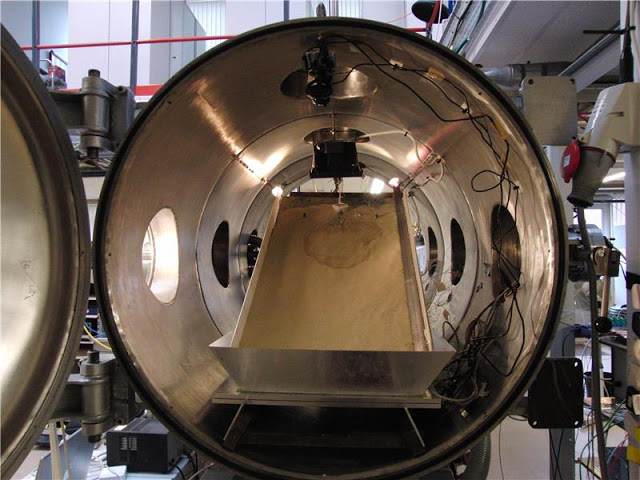

| Online: | |
| Visits: | |
| Stories: |

| Story Views | |
| Now: | |
| Last Hour: | |
| Last 24 Hours: | |
| Total: | |
Mars: Boiling water could be carving slopes into the planet’s surface
Active features observed on the surface of Mars could be the result of liquid water boiling whilst flowing under the low pressure of a thin atmosphere, according to an Open University study published online this week in Nature Geoscience.
The low pressure on the surface of Mars means that water is not stable for long and will either quickly freeze or boil; liquid water therefore exists only very temporarily. The streaks and slopes that have been observed and seen to lengthen on Mars during its summer had previously been attributed to flowing salty water. However, new research indicates the reason for this could be altogether more explosive, as sand particles on the planet’s surface are ejected by the rapidly boiling liquid.

Dr Manish Patel, who was part of the research team and responsible for the Mars simulation chamber says: “Water on Mars is generally unstable and it’s this sudden boiling during the flow of the water which is the key process that could be causing these small channels on the surface. This discovery has the potential to change how we interpret these kinds of geomorphological flow features on surface of Mars, and clearly shows us that there are important differences in how water-related debris flows occur on Earth and Mars.”
Citation: ‘Transport Processes induced by metastable boiling water under martian surface conditions’ was published by Nature Geoscience on 2nd May 2016. Read the paper: http://dx.doi.org/10.1038/ngeo2706
Source:



